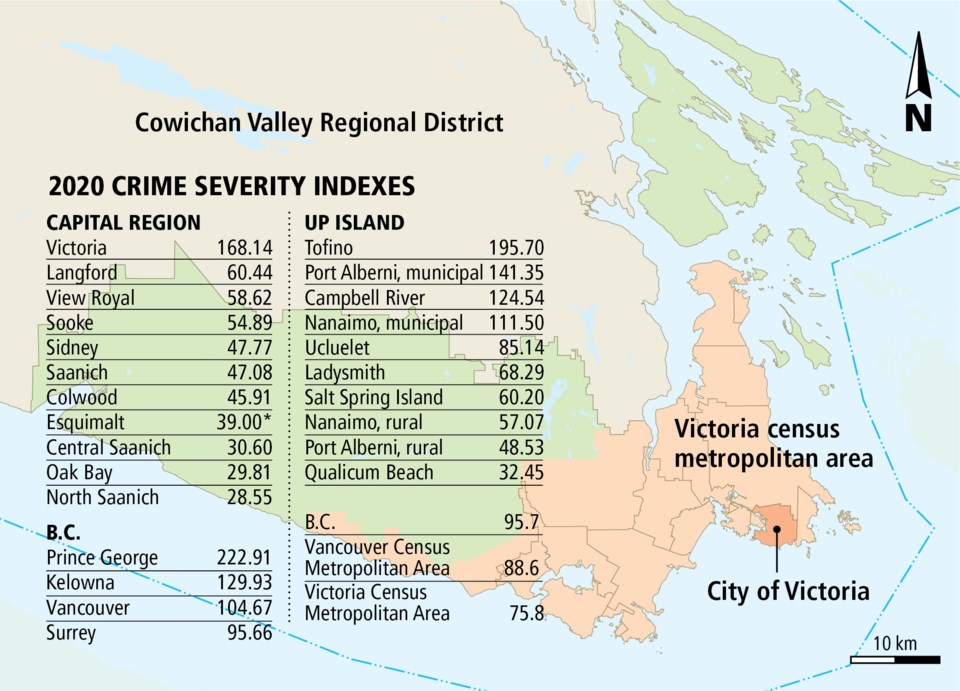Newly released data from Statistics Canada shows the volume and severity of police-reported crime in the city of Victoria last year was significantly higher than both the provincial average and Vancouver, but lower than several small Island municipalities.
Statistics Canada released information Tuesday on the crime severity index, which measures the volume and severity of police-reported crime, for jurisdictions across the country in 2020.
Victoria’s index was 168, higher than Vancouver’s 105.
It was 76 for Greater Victoria. B.C.’s average was 96.
The city came in below Island municipalities like Duncan (188), Port Hardy (186), Tofino (196), and several other B.C. cities. Hope (226), Prince George (223), Smithers (192), Prince Rupert (188) and Penticton (180) all top Victoria’s index.
“I don’t think we should sugarcoat it. The last year has seen a meaningful increase in the severity of crime in the city of Victoria,” said Rob Gillezeau, an assistant professor of economics at the University of Victoria who studies the economics of policing.
However, Gillezeau noted the city’s index is well below levels in the late 1990s and early 2000s. The earliest data available through Statistics Canada shows the city’s index at 278 in 1998 and slowly dropping to current levels around 2008. In 2019, the index was almost 40 points below last year’s.
“I think that the real message is that recessions are hard, and increasing crime is not something that’s unusual. As a resident of the city, I feel very safe here,” he said. “I think that we want to really track that as we recover and, fingers crossed, and return to normalcy, that this ticks back down.”
Last year’s higher number can be at least partially attributed to a change in reporting for 2020’s index, said Victoria Police Chief Del Manak. Last year was the first that saw crime severity indexes reported separately for Victoria and Esquimalt, which were previously combined under one score because they’re both policed by the Victoria Police Department, he said.
Victoria’s number was previously kept down, because its higher score was combined with Esquimalt’s lower index. Now that the numbers are reported separately, Victoria’s index is magnifying a high crime severity index that has existed all along, Manak said.
The StatsCan webpage does not reflect this reporting change, and it does not provide any numbers for Esquimalt after 2002. A request for clarification was not answered by deadline.
Manak said the relatively high index shows his officers are overstretched in trying to police the region’s downtown, and it highlights a need for regional policing to address a lack of resources to proactively prevent crime in the core.
He would like to see a move to a regional policing model that would allow him to deploy officers from less busy suburban areas to the dense downtown, which sees repeat offenders and more severe crime.
Rob Gordon, a professor of criminology at Simon Fraser University, was surprised to see such a high index in Victoria, which he would have expected to be close to but below Vancouver’s index.
The purpose of the index is “to say to policy makers and police personnel, you’ve got a problem here, and that’s what these numbers are saying to Del Manak,” Gordon said.
He recommended the police force bring in an independent analyst to determine why Victoria is seeing more severe crime than Vancouver.
He cautioned residents against jumping to conclusions that the city is dangerous.
“Don’t press the panic button,” he said.
- - -
Comment on this article by writing a letter to the editor: [email protected]



